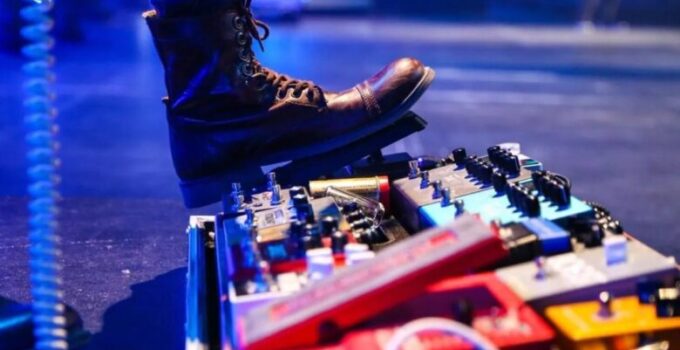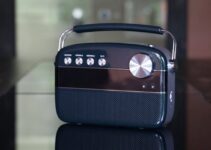Guitar effects, alongside the guitar itself and the amplifier, are equally important components of every guitarist’s arsenal. These individual devices allow each guitarist to create their unique sound, add spatial elements, such as reverb, or modulate the sound using effects like chorus or flanger.
Guitar effects are often used as various enhancements that diversify and embellish the guitar’s sound, expanding the range of sound possibilities for the amplifier and, primarily, the electric guitar. Guitar effects can be used to “boost” the guitar amplifier and influence its dynamic range.
Discover the beauty of music with the enchanting tones of play-guitars.com by following this link.
A Bit of Essential Information
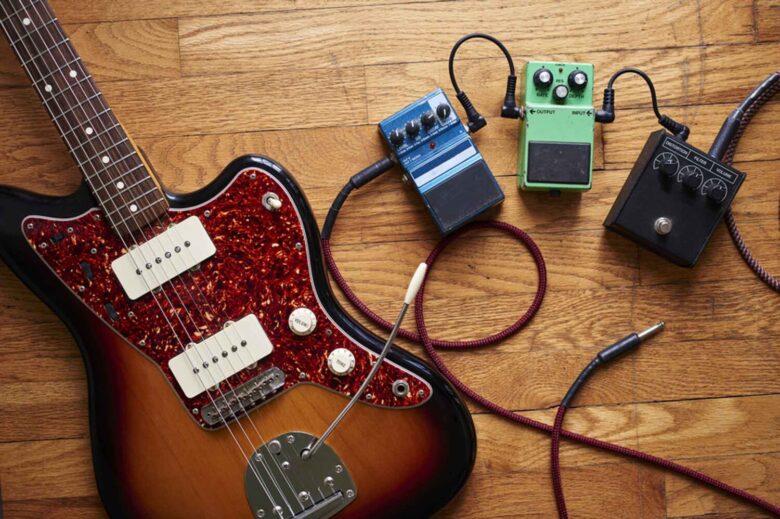
Source: adorama.com
Guitar effects come with a switch that allows you to turn the effect on or off with your foot, without interrupting your playing. This switch incorporates an electronic circuit called “True bypass,” although nowadays, all effects are equipped with this feature. However, some older effects may not have “True bypass,” so it’s essential to understand the purpose of this capability.
What Is True Bypass
When we play with one effect activated, such as a chorus modulation effect, the natural sound of the guitar and amplifier is altered due to the active effect. When we deactivate this effect, we return to the guitar and amplifier’s natural sound.
Effects without the use of a true bypass system, i.e., “true bypass,” continue to have some impact on the sound even after being turned off. In other words, even if the effect is switched off, it still minimally interferes with the natural sound of the guitar with the effect applied.
Effects with a “true bypass” circuit are designed to bypass the effect signal completely after it’s turned off, ensuring it has no influence on the natural sound of the guitar and amplifier. Currently, almost all guitar effects feature a “true bypass” circuit.
What Are Guitar Effects
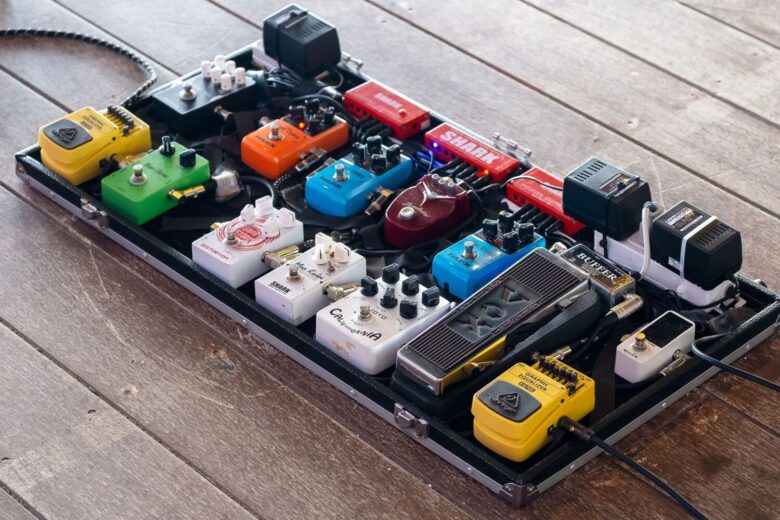
A guitar effect is nothing more than a separate electronic circuit used for processing, modeling, and modifying the sound produced by the guitar and amplifier. Effects are widely embraced by guitarists and not only guitarists, as other instrumentalists also successfully employ them.
Thanks to these small devices, we can significantly expand the sonic and dynamic range of our instrument and guitar amplifier, allowing us to create and manipulate sound within broad boundaries and subject it to various modifications and corrections.
There are so many types of effects and manufacturers of guitar effects that it’s challenging to enumerate them all, but they can be categorized into the following groups – modulation effects, spatial effects, dynamics effects, delays, and sound-distorting effects.
How Guitar Effects Are Further Divided
Guitar effects can be divided into two groups:
- Analog
- Digital
Analog: These effects use analog transistor circuits or, at times, even vacuum tube circuits for sound processing and correction. These types of effects are often found in popular devices known as “stompboxes.”
Digital: These effects are governed by a sound processor or digital system called DSP. Digital effects are frequently encountered in audio processors and sometimes in digital guitar amplifiers, but they also appear as standalone systems.
Types of Guitar Effects
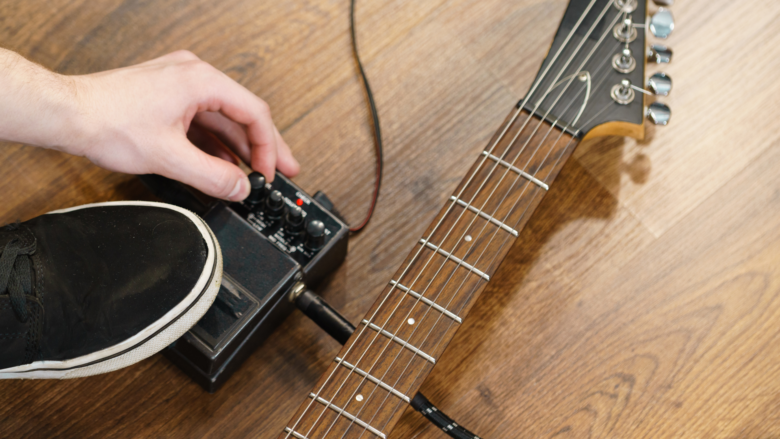
Source: blog.deplike.com
Compressor: Used to adjust signal dynamics.
Expander: A variation of a compressor, its task is to significantly influence and expand the sound’s dynamic range.
Limiter: An effect that prevents the signal from exceeding a certain threshold—also a variation of a compressor.
Noise Gate: Also known as a noise suppressor, its purpose is to eliminate any unwanted noise, such as that emanating from guitar pickups or noise generated during heavy distortion playing.
Equalizer (EQ): Allows for precise adjustment of the signal’s tonal color within a wide and specific range of frequencies. Equalizers come in various types, from simple ones like three- or multi-band EQs to parametric, bandpass, and shelving equalizers.
Equalizers can be categorized as:
- Graphic
- Parametric
- Bandpass
- Shelf
Distortion Effects
Fuzz: Introduces odd harmonics into the signal and was one of the earliest effects of this type created.
Overdrive: A softer sound effect with higher frequencies than fuzz. Overdrive provides a moderate level of distortion and is often used to boost the guitar amplifier.
Distortion: This effect adds significant and strong distortion to the signal. It is said to have been created by combining the two aforementioned effects, fuzz and overdrive. Distortion offers a much greater level of distortion than overdrive and a broader range of sound correction.
Spatial Sound Effects
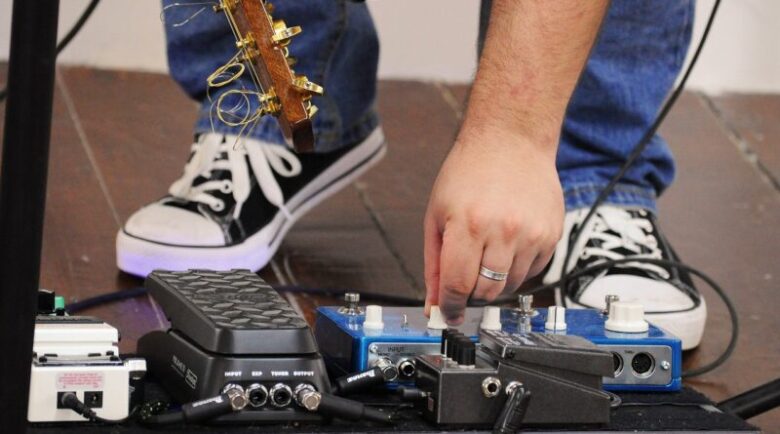
Source: recordhead.biz
Reverb: An effect that simulates the reverberation of a particular space, such as a church, arena, room, or hall, or a vibrating spring—popularly known as a spring reverb or “tank,” where the reverb is created using a steel plate.
Delay: This effect adds a certain number of repetitions to the signal and is also a type of spatial effect.
Modulation Effects
Chorus: Achieved by reducing the direct signal with a delay of approximately 20ms.
Flanger: A popular effect that dates back to the days before The Beatles. A flanger is a variation of chorus, with a shorter delay time of about 5 seconds, giving it its distinctive sound.
Phaser: This effect is somewhat similar to the flanger described above but has a very distinctive sound and is frequently used by various guitarists.
Octaver: This effect adds a sound one or even two octaves higher or lower than the original sound. Octaves can be shifted up or down.
Harmonizer: An effect that adds harmonic tones to the sounds we produce and creates the effect of two guitars playing on one guitar with different intervals. Harmonizers often offer extensive sound possibilities.
Tremolo: This effect enables a powerful “vibrato” that cannot be created by hand or with a movable bridge. The tremolo effect alters the sound frequency at specific intervals, depending on individual parameter settings.
Other Effects
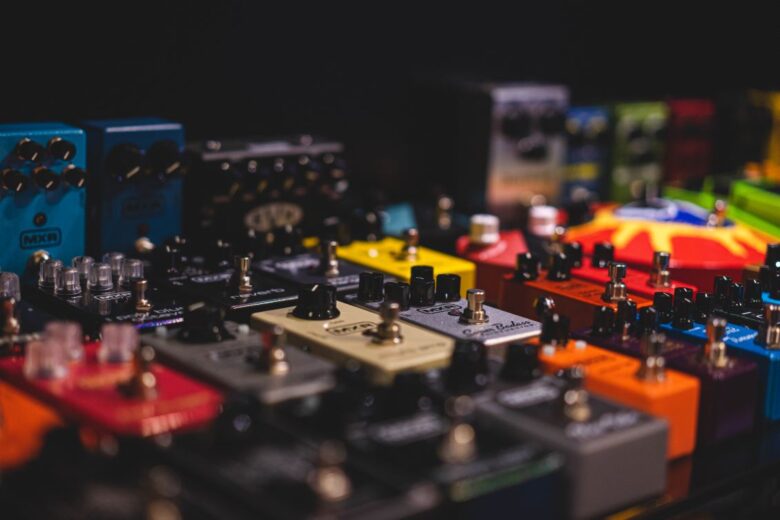
Source: guitarguitar.co.uk
Looper: Looper is not exactly an effect but a device that allows you to quickly record your playing and then play it back, recording the next part and so on. This can be looped and played in real-time, adding subsequent sections.
Tuner: This is a chromatic guitar tuner, a must-have in every pedalboard, allowing for quick, quiet, and accurate guitar tuning.
Wah-Wah: A Wah-Wah, commonly called “wah,” is an expression pedal that allows us to influence its distinctive sound in the right rhythm and tempo, i.e., “wah-wah.” This effect comes in two types: foot-controlled and automatic.
Expression Pedal: An effect often used to control volume levels, but with the appropriate equipment, it can be assigned to control various effect parameters.
DigiTech Whammy: This effect is a type of pitch shifter with an expression pedal, allowing you to change the pitch of the sound, either raising or lowering it.
How to Connect Guitar Effects
Guitar effects are typically connected to the effects loop jacks of a guitar amplifier (send and return), which is between the amplifier’s preamp and its power amp, or directly into the power amp, depending on the type of effects loop.
Effects are also connected to the amplifier’s input, immediately after the guitar.
Where Else Are Effects Used
Guitar effects are used during live performances to enhance the natural sounds of the guitar and amplifier. They are also used in sound recording studios for sound production and editing. Effects used in studios differ somewhat from traditional “stompboxes” since they are often integrated into racks.
Effects can also be found in audio processors and may be used in recording studios within DAW software as so-called VST plugins, which are small programs.
Conclusion
For experienced musicians guitar effects, alongside the guitar and guitar amplifier, constitute another crucial element for every guitarist. They allow significant influence over the classic sounds of amplifiers and guitars, subjecting them to correction across a wide range. Therefore, I encourage every guitarist to make use of effects and experiment with sound in this realm.
Personally, I cannot imagine playing without effects like chorus, reverb, or delay. These effects form the foundation and make the guitar sound, and most importantly, our playing, even more pleasing to the ears.

